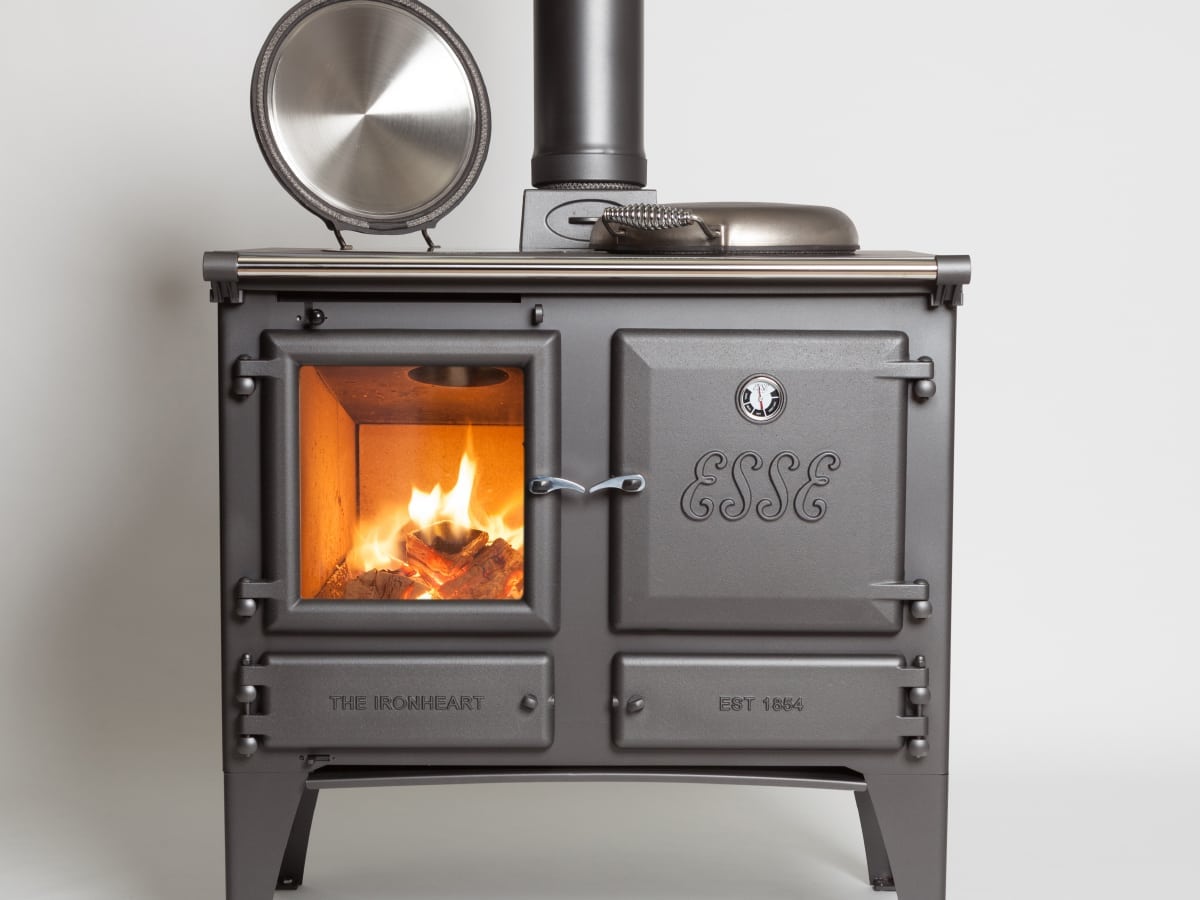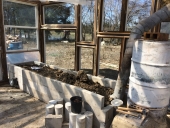High everybody, thanks for the feedback so far. I'll try to address all the questions.

The stove is fairly new, it's an Esse Ironheart. The boiler is indeed a tank style (as opposed to coil) on one whole side of the firebox.
The tubing run is copper, 3/4 or 1" i think. It has several bends including basically a 180 and has a very flat total rise/run ratio. The tank is a
Superstor Contender 50 gal. It's not very high off the ground and that may be part of the issue as well (that the tank is not much higher than the stove). The tank is only a few feet away from the stove.
There are multiple TP valves and expansion tanks in the system, so it should be reasonably safe. It's still quite disconcerting though when it boils over and we certainly try to avoid it.
We are grid tied and have solar power as well, however, it's still not assured that we'll always have power. Whatever we implement must be safe without electricity.
We also have evacuated solar tubes outside that heat a coil inside the Superstor hot water tank (when they're not pumping cold fluid, but that's for another post).
There is no thermostat or controls.
If we need to dump heat we can run the radiant floor system or just run hot water at the taps, most of the time though, we don't have enough heat.
I'd love to be able to get the tank temperature up in the 160-180 degree range, so that we'd have a greater quantity of usable hot water and also the tank would stay hot longer, also we could use the radiant heat more. Some of the other buildings here have very large water tanks that they heat up to 160-180 with big wood fired boilers.
I think the system has always worked this way, the owner and past tenants have mentioned it happening to them.
I wonder if we have a poor/weak thermosiphon due to low-ish tank height, kinky plumbing, and/or other issues. Is thermosiphon force proportional to the temperature differential? It seems like the water warms up reasonably well from room temperature up to 100 or so, but then it's much slower to get it warmer beyond 100. Perhaps as the water in the tank warms up, the thermosiphon force is reduced because the temperature differential becomes lower. This effect could be something of a downward spiral to the point where the water is barely flowing from the boiler, and since it's spending a lot of time there, it gets overheated and that's how we wind up with boiling water in the hot part of the system even though the storage tank temp is quite low (120 maybe).
Possibly relevant is that in the summertime the water is heated by the solar tubes only, and I'm not sure i recall it ever getting much above 110-120 then either. That system is actively pumped.
Would installing a 120VAC pump on a control that ran when the boiler is hotter than the tank work well and be safe? It would need to not substantially impede the water flow when off, so that the system would be safe during power outages.


































































 1
1

































 1
1























